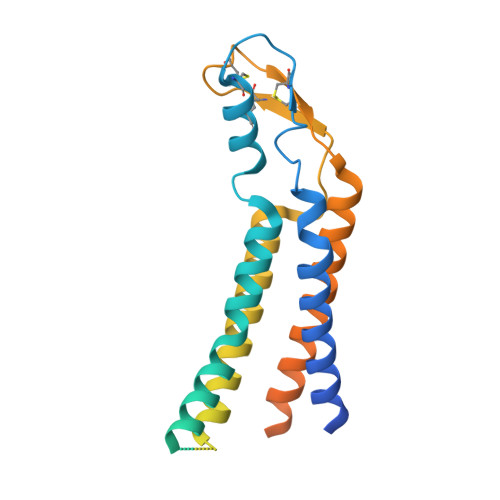Mefloquine-induced conformational shift in Cx36 N-terminal helix leading to channel closure mediated by lipid bilayer.
Cho, H.J., Chung, D.K., Lee, H.H.(2024) Nat Commun 15: 9223-9223
- PubMed: 39455592
- DOI: https://doi.org/10.1038/s41467-024-53587-6
- Primary Citation of Related Structures:
8XGD, 8XGE, 8XGF, 8XGG, 8XGJ, 8XH8, 8XH9 - PubMed Abstract:
Connexin 36 (Cx36) forms interneuronal gap junctions, establishing electrical synapses for rapid synaptic transmission. In disease conditions, inhibiting Cx36 gap junction channels (GJCs) is beneficial, as it prevents abnormal synchronous neuronal firing and apoptotic signal propagation, mitigating seizures and progressive cell death. Here, we present cryo-electron microscopy structures of human Cx36 GJC in complex with known channel inhibitors, such as mefloquine, arachidonic acid, and 1-hexanol. Notably, these inhibitors competitively bind to the binding pocket of the N-terminal helices (NTH), inducing a conformational shift from the pore-lining NTH (PLN) state to the flexible NTH (FN) state. This leads to the obstruction of the channel pore by flat double-layer densities of lipids. These studies elucidate the molecular mechanisms of how Cx36 GJC can be modulated by inhibitors, providing valuable insights into potential therapeutic applications.
- Department of Chemistry, College of Natural Sciences, Seoul National University, Seoul, 08826, Korea.
Organizational Affiliation:


















